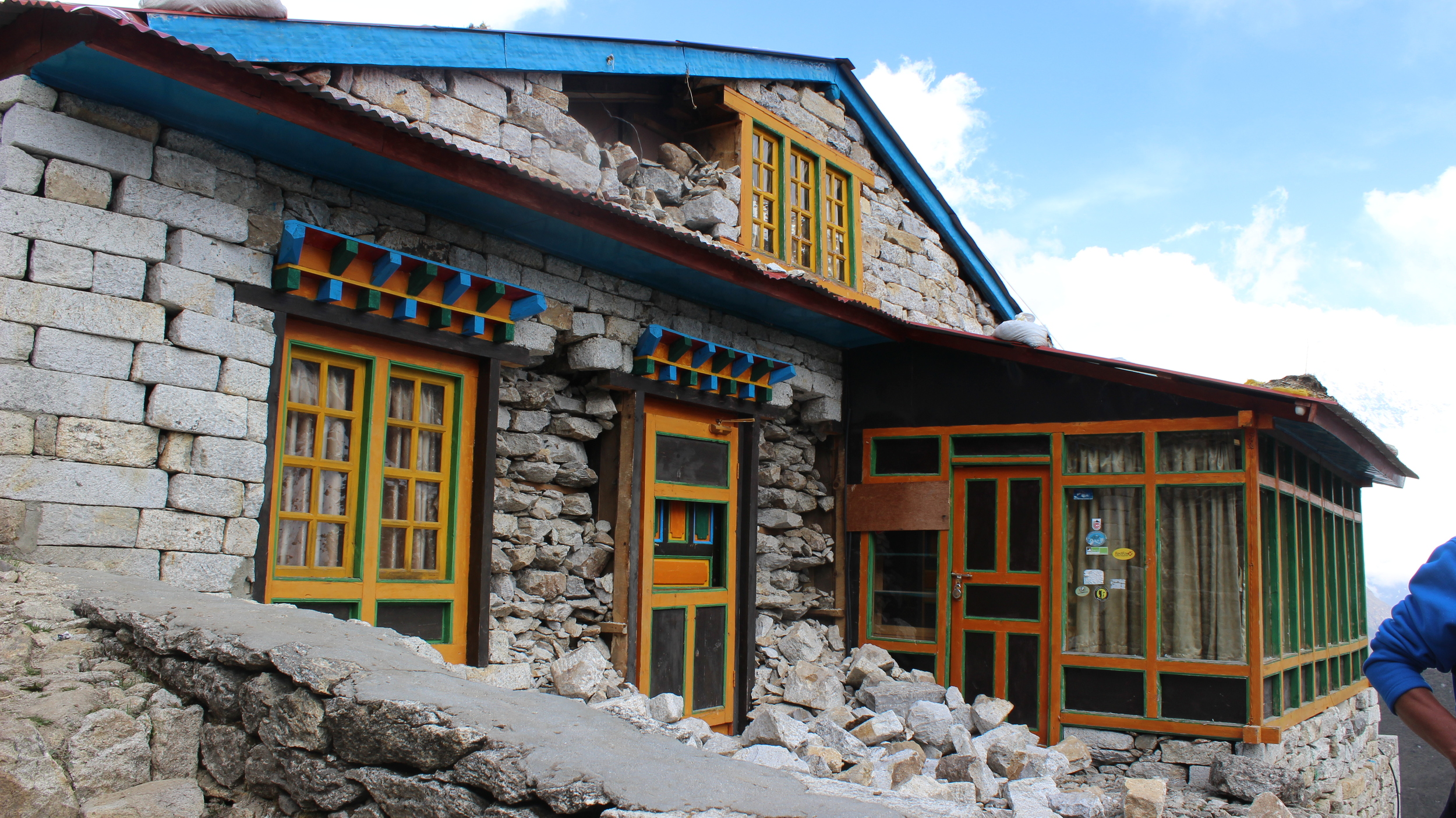Our Story
Thame (pronounced "Ta-may") Valley lies 20 miles west of Mount Everest, in the upper Khumbu region of Nepal. It is the heart of Sherpa country, a string of high-altitude villages stretching from the market town of Namche to the border with Tibet. Most Thame villagers work by climbing or servicing the world's tallest peak. A few famous locals: Tenzing Norgay, who made the first ascent of Everest, grew up in Thame. The long-time world record holder for most Everest summits, Apa Sherpa, was born and raised in Thame (hear his story here). The most successful Everest guide, Lakpa Rita Sherpa, is native to Thame.
In the spring of 2015, tragedy struck the Thame community - and the whole of Nepal - with two earthquakes measuring 7.8 and 7.3. On a national scale, more than 9,000 lives were lost and an estimated $10 billion of damage was caused (more than half of the country's GDP). Thame was just 30 miles from the epicenter. The earthquakes destroyed more than 90% of the homes in the valley, as well as the school and historical monuments. They also disrupted overland access, causing the price of construction materials to skyrocket.
Traditional Sherpa houses are made of rock, timber and mud plaster. Built at high altitude, they withstand some of the harshest weather conditions on Earth. However, prior to 2015, they were not designed to resist extreme shaking. After the first earthquake, many villagers attempted to patch up the damage. After the second earthquake, most homes had either completely collapsed or were severely compromised. Trust in the old way had evaporated. No one wanted to live in a two-story structure again.
Thame Sherpa Heritage Fund was founded to lead the redesign and reconstruction of traditional Sherpa structures for the long-term benefit of the community. We are a non-profit organization bringing together international expertise and grassroots leadership to ensure that Thame is rebuilt in a sustainable, culturally sensitive, and equitable manner. We believe that local participation is critical to success. The road of rebuilding is arduous, and requires investment long after emergency relief efforts have faded from memory. Hear from us in this video:
Vision
GOALS & STRATEGY
- Short-term (2015): Immediate relief through the funding and delivery of materials for temporary shelter, and other supplies.
- Medium-term (2016): Building an operationally and financially sound platform (solicitation, formulation and assessment of proposals) for reconstruction and development with grassroots support.
- Long-term: (2017 - present): Achieve higher standards of safety and quality of life in Thame Valley through the informed reconstruction of village buildings and monuments of cultural heritage.
Our strategy is to:
- Apply well-considered criteria and a disciplined selection process to the funding of projects
- Engage world-class experts in architectural and engineering design in consultation with Thame Sherpa community to develop the Thame Valley’s capacity with a concomitant commitment to cultural preservation and sustainability
- Engage a Board of Directors with diverse expertise and grassroots support
Project Selection Criteria
Criteria will be finalized by the Board of Directors, and may include:
- Supported by the expected users of the building project
- Affordable and sustainable
- Ecologically sound
- Respectful of Sherpa cultural heritage
- Visionary for sustainable development
- Adding value to the Thame Valley community
- Defined by a construction plan, budget, timetable and project leader
- Enhanced by co-funding from stakeholders and other external donors
Get In Touch
Email us at info@thamesherpafund.org






![IMG_4757[1].JPG](https://images.squarespace-cdn.com/content/v1/553f058be4b0cd6f7f70862d/1430334657754-RJLBZF86H18Q8BWKJ8C4/IMG_4757%5B1%5D.JPG)
![IMG_4763[1].JPG](https://images.squarespace-cdn.com/content/v1/553f058be4b0cd6f7f70862d/1430334881510-ZATXQ9RTI8BEYQLX5AS3/IMG_4763%5B1%5D.JPG)
![IMG_4762[1].JPG](https://images.squarespace-cdn.com/content/v1/553f058be4b0cd6f7f70862d/1430334954155-G9VRSHZ2G79O3D89MIHQ/IMG_4762%5B1%5D.JPG)
![IMG_4765[1].JPG](https://images.squarespace-cdn.com/content/v1/553f058be4b0cd6f7f70862d/1430335097610-HRVYKDXGBSF61X07D8T1/IMG_4765%5B1%5D.JPG)
![IMG_4764[1].JPG](https://images.squarespace-cdn.com/content/v1/553f058be4b0cd6f7f70862d/1430335131771-XUV7IYXSB3II7J7LB13I/IMG_4764%5B1%5D.JPG)
![IMG_4759[1].JPG](https://images.squarespace-cdn.com/content/v1/553f058be4b0cd6f7f70862d/1430335164725-3TAGPVUHJUK55I59Y78O/IMG_4759%5B1%5D.JPG)











